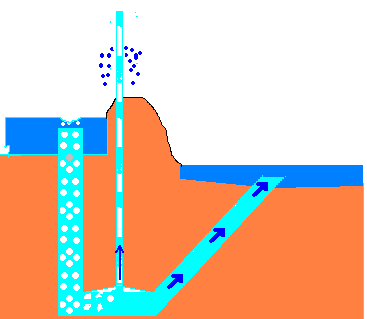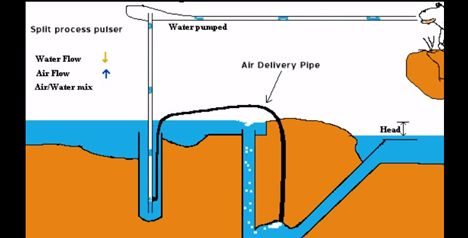.
The Only Power Required Is A Head Of Water
It’s also a perfect DIY pump because all the parts you need can be found at the local hardware store and with no moving parts it is dead simple to make.
This is the Pulser Pump. The idea behind this pump is to suck air down a pipe with a stream of water and the let that air which has now been compressed by the head of water, escape up a smaller pipe along with some of the water. This water floating up the small pipe takes the water with it to a height higher than the original water surface.

.
Many people find the working of a pulser pump quite difficult to understand but they are actually based on widely used science. If you have ever used a vacuum cleaner, you have used a flow of air to pump solids or liquid! The flow of air is provided by the same basic principle that sucks air down the sink or bath plughole when you pull the plug. Just as that air gets sucked down the pipe, air gets sucked into a pulser pump too! It is that simple.
When a pulser pump pumps water up an inclined pipe another principle is used. However it is readily seen in nature. It is the wave! Air traveling over the ocean makes waves as it moves over the water. Exactly the same thing happens in a 3/4 inch pipe or 1 or 2 inch pipe. And when the wave is high enough, it blocks the pipe and becomes plug flow. So, pulser pumps are based on simple principles found throughout nature. It just happens that they are mathematically difficult to describe. And so people back off! BUT experimentally, it is a piece of cake to make a pulser pump or a model that shows how it works.
I have made pulser pumps which work on a half meter head and about 250 liters per minute of flow to power them. (these use 4 inch diameter pipes for the power flow) but I recommend a minimum flow for a commercial pulser pump to be about 600 liters per minute of water.
Details of how to make a pulser pump are available on the internet athttp://members.tripod.com/~nxtwave/gaiatech/pulser/index.htm
.
More On This Pump And A Video Too
.
Next Page »
Pages: 1 2



